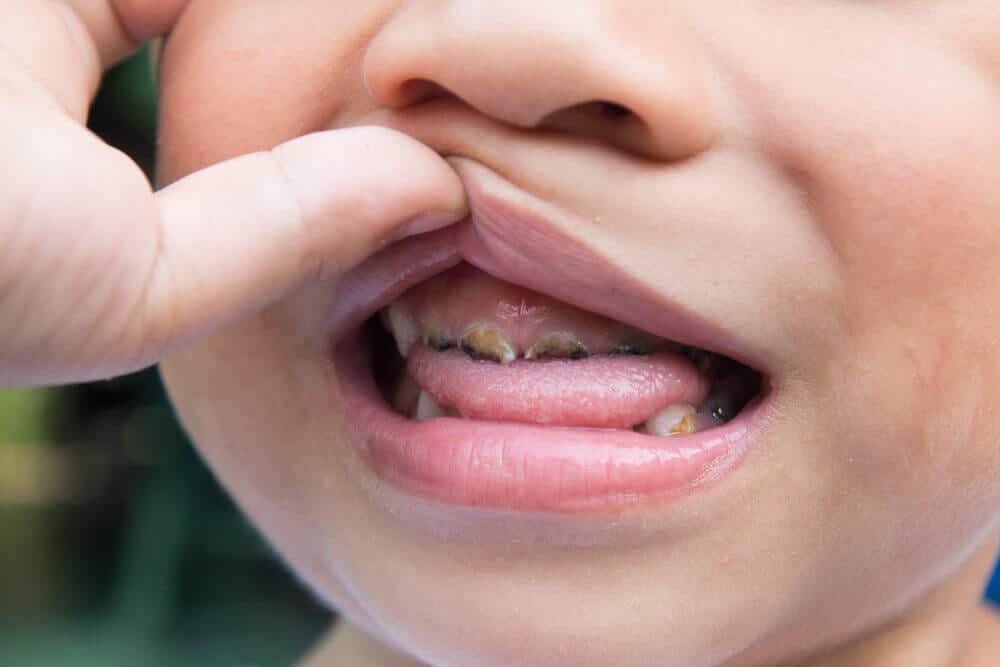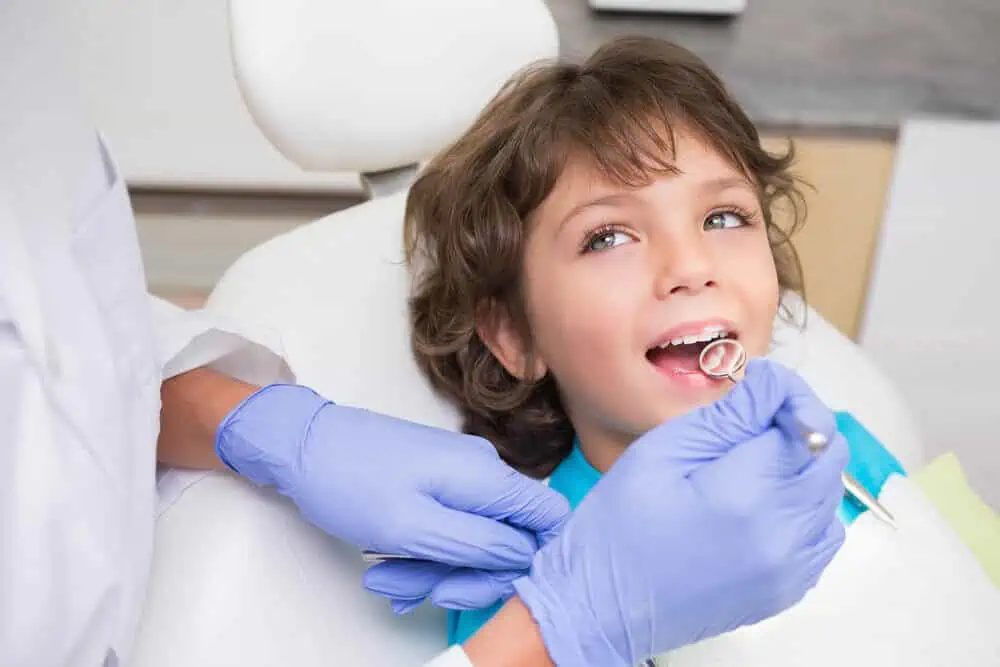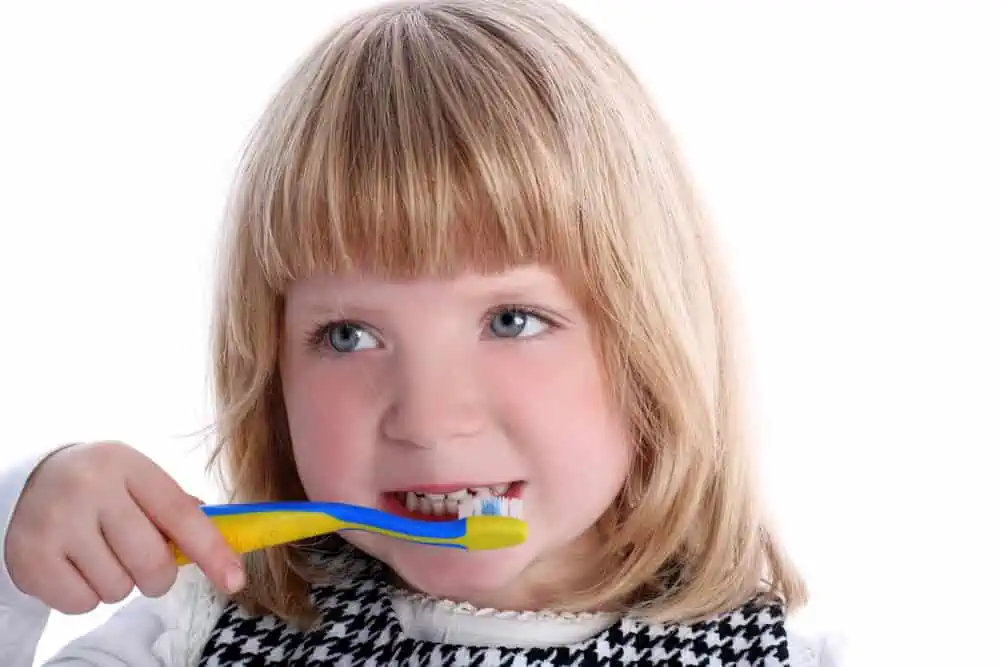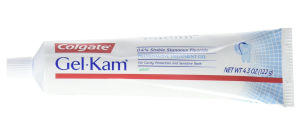Has your child's dentist recommended that they have fluoride varnish applied to their teeth? Or perhaps you're looking into the options for yourself as an adult and want to know more about the benefits and potential risks of fluoride varnish.
This treatment is widely used as a preventative measure against dental caries (tooth decay). It's highly encouraged that children routinely get it, but it can be used on adults as well. Although it has been proven to be very effective, it's natural you want to understand more before going ahead.
In this article you can read about:
- The benefits for adults and children
- Possible risks and side effects of the treatment
- The sodium fluoride varnish application procedure
- How much fluoride varnish costs on the NHS and privately
We hope this helps you decide if you want to go ahead with the treatment, whether for your child or yourself. If you want to know more about caring for your child's teeth, we welcome you to browse our full collection of articles on dental care for babies and children.
Table of contents
What is fluoride varnish?
Fluoride varnish is, as the name suggests, a liquid that contains a high concentration of fluoride. It may also come in the form of a gel. A thin layer is applied directly to the teeth, where it hardens and releases fluoride into the enamel.
Fluoride is a mineral that helps strengthen tooth enamel, thereby making teeth more resistant to decay. Fluoride is added to the water supply in some areas and is found in many kids' toothpastes.
Topical fluoride varnish benefits
Tooth decay in children is a big problem throughout the world. According to the CDC, in the US, 20% of children between the ages of 5 and 11 have at least one untreated decayed tooth and 13% of teenagers between the ages of 12 and 19 have at least one untreated decayed tooth.


Fluoride varnish treatment has been proven to reduce the prevalence of dental caries in baby teeth by 37% and permanent teeth by 43%, according to this Cochrane review. It's particularly effective for children who are at high risk of decay and who are not exposed to fluoride from other sources.
Applying sodium fluoride varnish can also help reverse early signs of tooth decay (white spot lesions), as examined in this clinical trial.
Fluoride varnish treatment is quick, simple, and non-invasive. It must be carried out by a dental professional but doesn't need to be done in a dentist's office. It might be carried out at your child's school or daycare, for example, as part of a community program. This can make it less daunting than being treated in the dentist's chair.
Another preventative treatment often offered to children with permanent teeth is dental sealant. This fills in deep grooves and pits in the biting surfaces of the teeth, making them easier to clean and reducing the chances of decay.
Fluoride varnish for toddlers
Many parents are concerned about exposing their children to fluoride too early. While it's completely reasonable to have these concerns, most dentists agree that even children younger than three can benefit from treatment.But it may not be necessary for all toddlers to receive it. Take a look at the following criteria for children who can benefit from fluoride varnish, provided by various pediatric health institutions:
- All children who are eligible for Medicaid
- Premature children
- Sibling with cavities before six years of age
- Children with special health care needs
- Children without a designated dentist or care network
- Children who use a bottle after 15 months
- Children who have sweet or starchy snacks more than three times a day
You can also consult with your child's dentist, as they will help you make the right decision about your child's dental health.
Risks and side effects
Fluoride varnish safety is vouched for by the majority of the medical community. Despite this, many are concerned for their children to have this treatment due to unfounded rumors of fluoride varnish toxicity. However, a research brief published by the Association of State and Territorial Dental Directors says that the small amount of fluoride that may be ingested after application causes no acute toxic effects in patients.


There are some side effects, however, One of the fluoride varnish side effects is dental fluorosis, a condition that results in white spots on the teeth while they are developing. The amount of fluoride exposure from treatment shouldn't pose a significant risk.
That said, do make sure your child spits out all excess toothpaste after brushing—especially in the days following fluoride varnish treatment. If they regularly swallow fluoride toothpaste, the risk of fluorosis increases.
Although fluoride varnish is a very safe and widely practiced treatment, it is not suitable for everyone.


If you or your child take fluoride drops or tablets, mention this before receiving treatment. You may be advised not to have fluoride varnish at all, or to stop taking the other supplement for a few days after the varnish is applied.
Patients with a medical history of allergies should be individually assessed before treatment to reduce the risk of fluoride varnish side effects. Specifically, patients may not be treated if they have allergies to sticking plaster (which contains colophony, also found in duraphat fluoride varnish) or food allergies or asthma which have resulted in hospitalization.
Finally, if you or your child have any mouth sores or ulcers on the day of treatment then it will probably be postponed.
Fluoride varnish for adults
Although this treatment is routinely offered to children in the US, it can also be beneficial for adults. Specifically, the treatment may be recommended for adults who:
- Suffer from sensitive teeth
- Have thin tooth enamel or significant enamel erosion, for example from teeth grinding
- Have chronic tooth decay
Mention it to your dentist at your next visit if you think you might benefit.
Fluoride varnish application
Treatment can be carried out as soon as a baby's first milk tooth appears. The American Dental Association (ADA) recommends that children are treated 2 to 4 times a year. Dentists may recommend more frequent treatment for children who already have tooth decay or are at high risk of developing it.


The fluoride varnish instructions for application differ a little for children and adults. For children, it usually involves drying the teeth with cotton and then applying the varnish with a small brush to coat the teeth. For adults, the dentist may first perform a teeth cleaning to remove all plaque from the teeth, before drying them and applying the varnish.
In any case, the fluoride varnish application itself should take no more than a minute or two, and it is completely pain-free.
What's more, it has a pleasant, fruity taste and smell, and it sets quickly once applied to the teeth. The varnish has a golden yellow color, which means that the teeth may appear yellow for a while after application. Don't worry, this color will fade after a day or two and won't stain teeth permanently.
Fluoride applications have been around for many years. As a student in 1980, I applied fluoride gel in trays. Children would sit for a while with fluoride trays in their mouths, and dribble a lot. More recently, regular applications of fluoride varnish are preferred to sealants since the application procedure is tolerated by children better.
It's simple to apply the varnish and give the child a reward, making it a positive, relatively pleasant experience for both the child and their parent. It has to be repeated regularly, and the majority of children enjoy it, even demand it.
As we get older, our mouths become drier, and root decay more likely—a higher concentration of fluoride in toothpaste helps, especially when cleaning your teeth at night. Our saliva content and quantity changes, and some kinds of toothpaste may help with the loss of protective mineral content that the saliva provided.
Dr. Antony Smith BDS, DPDS
After application
For the varnish to be most effective, you or your child may be instructed to:
- Avoid eating or drinking anything for 30 minutes following treatment
- Wait until the next morning before brushing your teeth
- Avoid crunchy, hard and chewy foods for the rest of the day, since these can scrape some of the varnish off
- Eat and drink only cold and warm foods and drinks—nothing hot
The next day, you can go back to eating and brushing your teeth as normal.
These are general guidelines only; you should follow any other advice given by the dentist or nurse administering the treatment.
In the video below you can see how fluoride varnish is applied:
How long does fluoride varnish last?
The varnish will start to wear away when you brush your teeth and will be completely gone within a few days. By then, the fluoride has already penetrated the dental enamel and will continue to protect the teeth for several months.


Fluoride varnish should be re-applied every six months, or sooner if recommended by your dentist.
You should not rely on fluoride varnish alone to keep teeth healthy. It's important to brush twice a day using a fluoride toothpaste and a suitable kids' toothbrush, and minimize consumption of sugary snacks and drinks. Our guide to children's oral health has more information and tips for protecting children's teeth against decay.
What does fluoride varnish cost?
As well as being easy to apply and pain-free, fluoride varnish is also one of the cheapest treatments around.
Is it covered by insurance?
Children and teens on Medicaid or CHIP will receive it for free. There may be programs run through schools that will also be free of charge. For adults aged 18 and over, it depends on what state you live in if this treatment is covered under Medicaid. But with a little searching, you'll probably be able to find a free fluoride varnish program. For more information on access to low-cost dental care, check out our Medicaid dental insurance article.
Paying privately
If your child receives private dental care, fluoride treatment may well be included as part of their regular dental checkups. If paid for separately, fees start from as little as $23, but of course, costs vary from one dentist to the next.
As a preventative treatment, it is included in many dental insurance plans. Check your plan details to see if you're covered. Read more about the best dental insurance.
Can you buy fluoride varnish to apply at home?
You may be wondering if you can buy fluoride varnish other-the-counter, and if so, how to apply fluoride varnish at home.
You can buy fluoride varnish online, however, you have to have a healthcare license, and the ADA doesn't promote the home-use of varnish per se.
The ADA does, however, recommend prescription-strength topical fluoride application at home in the form of fluoride gel. In these guidelines, a panel of experts deems that the home-use of a 0.5% fluoride gel will benefit those prone to cavities. This particular guide is due to be updated next year, so check back soon to see if recommendations have changed.
Fluoride varnish brands
It's normal that you want to be able to know what your dentist is putting in your mouth. The following is a list of some of the most well-known brands used in professional settings and approved by the ADA, so you can do your research before you go in for treatment:
- Colgate PreviDent varnish
- Embrace varnish
- Enamel Pro varnish
- Vanish 3M varnish
The above products are all actual varnishes and can only be bought with a healthcare license. But for home use by non-professionals, you can buy fluoride gel online, including from the following brands:
- Colgate Gel-Kam fluoride preventive treatment
- 3M Just for Kids Brush-On Gel
- Mark3 APF Thixotrophic Fluoride Gel
Conclusion
Fluoride varnish application is an effective way to prevent tooth decay and remineralize teeth, for both children and adults. Children can receive free fluoride varnish treatment on Medicaid or through community programs at schools.
Risks associated with this treatment are minimal, but your dentist will carry out an assessment before applying the varnish.
Treatment should accompany proper teeth brushing and good oral hygiene to keep teeth in the best condition possible.
FAQs
How long do you leave fluoride varnish on teeth?
Fluoride varnish at the dentist's office or fluoride gel at home should generally remain on your teeth until it naturally wears off (with a normal tooth-brushing schedule of course). If you are accustomed to brushing your teeth after lunch, and you get your fluoride treatment in the morning, your dentist may instruct you to hold off brushing your teeth until before bed.
How long do you have to wait after fluoride varnish before eating?
You don't have to wait long to eat after a fluoride varnish, but dentists recommend waiting to eat for 30 minutes after your treatment to give the varnish a chance to absorb into the enamel.
What are the side effects of fluoride varnish?
Side effects of fluoride varnish are not very common. However, in some people too much fluoride can result in fluorosis—a condition where teeth develop white patches. Fluorosis normally only affects oral health in an esthetic manner, and if your dentist recommends this treatment for your child, it's because they sincerely believe the benefits outweigh the risks.
Karger: Efficacy of Fluoride Varnish and Casein Phosphopeptide-Amorphous Calcium Phosphate for Remineralization of Primary Teeth: A Randomized Clinical Trial. Consulted 14th November 2019.
Cochrane: Fluoride varnishes for preventing dental caries in children and adolescents. Consulted 14th November 2019.
ASTDD: Fluoride Varnish: An Evidence-Based Approach. Consulted 10th December 2019.
CDC: Children's Oral Health: Overview. Consulted 10th December 2019.
Contemporary Pediatrics: Pediatric Oral Health: Fluoride use Recommendations. Consulted 10th December 2019.





